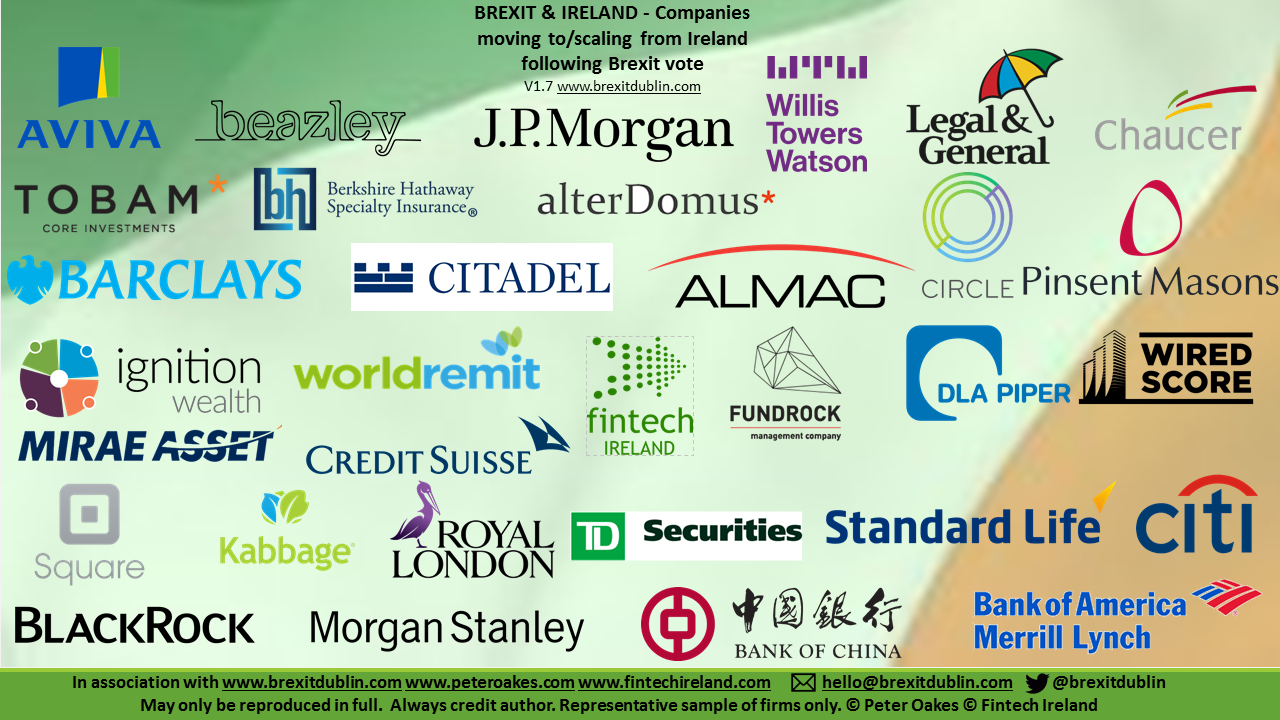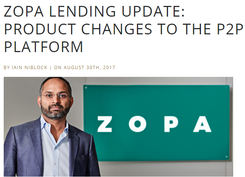 Check http://brexitdublin.com/whos-moving-here.html for latest version
Check http://brexitdublin.com/whos-moving-here.html for latest version
 Check http://brexitdublin.com/whos-moving-here.html for latest version Check http://brexitdublin.com/whos-moving-here.html for latest version New Brexit & Ireland website and service announced to help fintech and finserv establish sustainable presence in Ireland. www.brexitdublin.com also provides links to news reports about international companies relocating to. and scaling from, Ireland.
0 Comments
 This post is an introduction to a review of Zopa Lending by Orca Money and Iain Niblock. The contents of this post and links to information within are the sole responsibility of Orca Money. "Zopa, founded in 2005, was the first peer-to-peer lending (P2P) platform to launch in the UK and globally. Zopa allows investors to lend money to consumers seeking personal loans to purchase cars, consolidate debt or to fund home renovations. Zopa has facilitated more personal loans than any other provider and in July 2017 had lent a cumulative £2.44bn, marginally behind Funding Circle’s £2.47bn. Zopa currently boasts 60,000 lenders on its platform, with retail investors representing just over half of their volumes and institutions representing the rest. Zopa’s success in the institutional space has led to key strategic partnerships with the likes of Metro Bank. Investors can choose between Zopa Core or Zopa Plus products, which is a reduction from the three investment product choices offered this time last year. The main difference between the products is the loan-types invested in, which results in differing expected rates of return. Previously, Zopa had three products: Zopa Access, Zopa Classic and Zopa Plus. Zopa Core and Zopa Plus both have a minimum investment amount of £1,000 and offer “auto-bid” functionality, which means that your capital is automatically lent out in chunks starting at £10 to ensure your portfolio is sufficiently diversified. To access your money early, there is a 1% fee applicable on both products. Currently, retail investors are not able to access Zopa’s products due to high demand, but potential investors can sign-up online to be notified once Zopa are accepting capital again. Withdrawing Funds During the loan term, Zopa investors will receive monthly repayments from borrowers. Investors can select whether their account should hold these repayments in their holding account, or whether to have them automatically re-invested in new opportunities (this is the default setting). Investors can withdraw money from their holding account at no extra charge and so if investors wish to withdraw their money at no cost they will have to wait until all repayments have been made. With loan terms up to 60 months on Zopa, it may take up to 60 months to receive all your capital and interest back, if you choose not to re-lend. The headline advertised interest figures assume that you re-lend your money, so if you were to turn this setting off your actual interest rate would reduce. Depending on the length of the remaining loans, it may be better to take the 1% hit and invest the funds elsewhere. To withdraw funds earlier than this, investors must sell their loan parts to other investors on the Zopa secondary market. Zopa charges 1% to sell loans parts on the secondary market. Although it is worth noting that this relies on buyers being willing to buy these loans, which under normal market conditions is highly likely, but of course there may be a circumstance in adverse conditions where this is not the case and you have to wait out the term of your loan. Net Returns To estimate net returns, Orca has conducted loan by loan cashflow analysis on every loan originated by Zopa. An accurate estimation of actual net returns can be made for the years where 100% of loans are complete. As the maximum loan term on the Zopa platform is 5 years, loans as far back as 2012 are still in circulation and therefore at risk of default. As the years progress the percentage of assets (loans) under management increases, and the accuracy of net returns estimates decreases. The chart below assumes that all assets under management complete as planned with all repayments made. No default estimation has been applied. The actual net return will therefore be reduced as loans progress through their term. You can see default rates in the next chart below. Net returns prior to 2014 have consistently been above 5%, even during the 2008 recession. Post 2008, competition for borrowers was low, pushing up the weighted average borrower rates, even for prime borrowers." Continue reading this post on Orca Money's webiste at https://www.orcamoney.com/blog/zopa-lending |
AuthorFintech Ireland Archives
December 2026
Categories
All
|